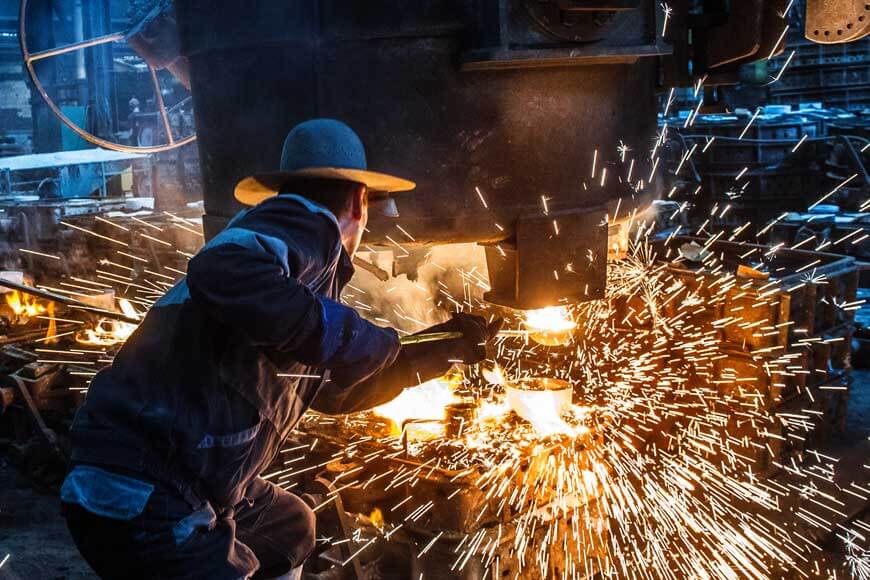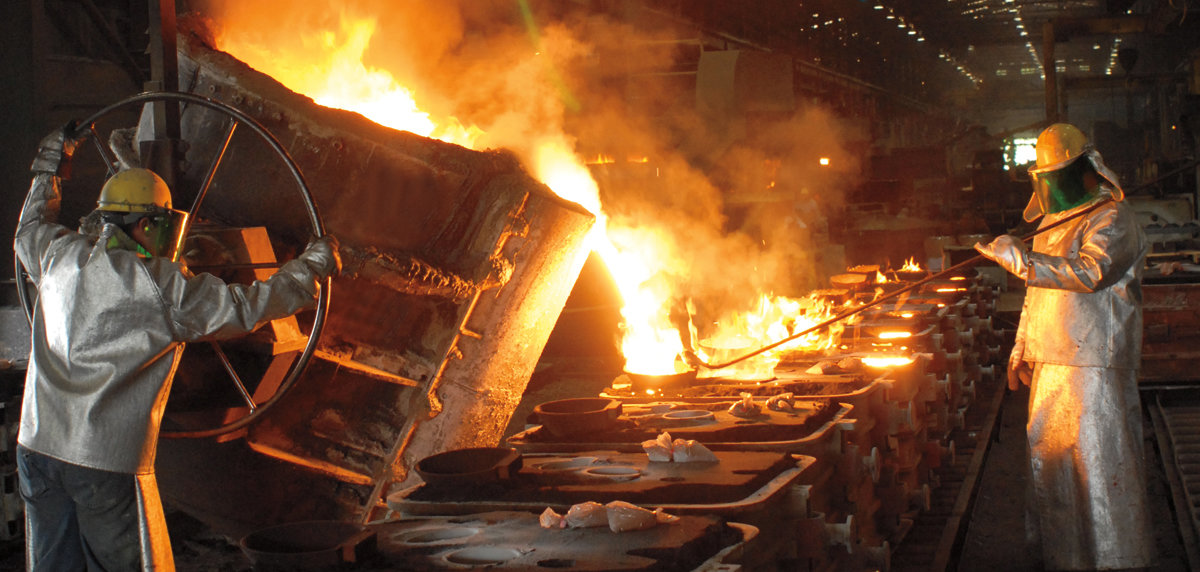From prototype to production: how Metal Casting brings products to life
Discovering the Role of a Metal Foundry in Modern Production Processes
Metal foundries are crucial in the landscape of modern-day manufacturing. They offer crucial components throughout numerous markets, adjusting to the needs of markets such as automobile and aerospace. Advanced techniques such as 3D printing and automated casting have actually changed their operations. Additionally, sustainability has actually ended up being a priority, influencing their practices. As these foundries evolve, the ramifications for producing performance and advancement are considerable, elevating concerns about their future trajectory in an ever-changing economy.
The Advancement of Metal Casting Methods

With the surge of automation, foundries took on methods like die casting and lost foam casting, streamlining the production process and decreasing waste. Each advancement in metal casting techniques has actually satisfied the requirements of different markets, from vehicle to aerospace. As metal casting proceeds to breakthrough, the interaction in between technique and innovation remains important in meeting modern manufacturing challenges, guaranteeing that foundries adapt and thrive in an ever-changing landscape.
Assimilation of Advanced Technologies in Foundries
Although traditional metal casting approaches have actually offered the market well for centuries, the integration of advanced modern technologies in foundries is transforming the manufacturing landscape. Automation and robotics enhance production procedures, boosting effectiveness and decreasing the threat of human error. When impossible with standard techniques, technologies such as 3D printing allow for fast prototyping and the production of complicated geometries that were. Additionally, information analytics and the Web of Points (IoT) allow real-time monitoring and predictive upkeep, eventually bring about minimized downtime and increased performance. These developments additionally help with modification, allowing suppliers to respond rapidly to market demands. As sustainability comes to be a concern, the fostering of ecologically friendly technologies, such as electrical melting heating systems and progressed sand recovery systems, better shows the sector's dedication to technology. Jointly, these technologies not just boost operational effectiveness however additionally placement foundries at the leading edge of modern production techniques.
The Influence of Material Science on Foundry Workflow
Product scientific research plays a critical function in boosting shop procedures, affecting both the selection of products and the overall casting procedure. Advancements in product scientific research offer a much deeper understanding of the residential properties of metals and alloys, making it possible for foundries to select the most appropriate products for certain applications. This understanding enhances the performance and toughness of cast products, which is necessary for satisfying market requirements.
Developments in material formulations and additives contribute to boosted casting strategies, minimizing flaws and optimizing production efficiency. The development of innovative metal compounds and wise materials permits foundries to create lighter, stronger parts, which are significantly demanded in various fields such as vehicle and aerospace.
Additionally, product scientific research help in the recycling of metals, making procedures a lot more economical and efficient. By leveraging the most up to date searchings for in material scientific research, foundries can adapt to developing market demands, guaranteeing their competitiveness in a swiftly changing production landscape.
Sustainability Practices in Modern Metal Foundries
With the growing focus on environmental duty, contemporary metal foundries are significantly carrying out sustainability methods to minimize their eco-friendly footprint (Metal Casting). One key strategy involves the recycling of scrap metal, which not only lowers waste however additionally conserves energy and basic materials. Foundries are embracing advanced melting innovations that boost energy effectiveness, subsequently decreasing greenhouse gas discharges. In addition, using eco-friendly coatings and materials has actually acquired traction, more decreasing unsafe emissions during production
Water preservation strategies, such as closed-loop air conditioning systems, are being executed to minimize freshwater usage. Lots of foundries are additionally purchasing renewable resource sources, like solar and wind, to power their operations, thus reducing dependence on fossil gas. Staff training programs focused on sustainability techniques promote a culture of ecological recognition within the workforce. These efforts collectively contribute to a much more sustainable future for metal foundries while fulfilling the needs of eco-conscious consumers.
The Future of Foundries in a Changing Financial Landscape
As the international economic climate develops, foundries deal with a myriad of difficulties and possibilities that will certainly shape their future (Metal Foundry). The increasing need for light-weight products and advanced alloys requires development in production strategies and technical integration. Automation and wise production practices are coming to be important for boosting performance and reducing operational costs. Furthermore, the surge of sustainability concerns forces foundries to adopt greener processes and reusing efforts, aligning Extra resources with global ecological goals
The economic landscape is additionally shifting, with supply chain interruptions and fluctuating resources rates providing significant difficulties. Foundries need to adapt by expanding their supply sources and buying materials scientific research. Additionally, collaboration with sectors such view as renewable resource and electrical vehicles can cultivate growth. Eventually, the future of foundries will depend upon their ability to leverage technical advancements while continuing to be responsive to market characteristics and environmental imperatives, ensuring their importance in modern manufacturing.
Regularly Asked Questions
What Kinds of Metals Are Frequently Used in Foundries Today?
Frequently made use of metals in foundries today include light weight aluminum, iron, copper, zinc, and steel. These products are favored for their diverse buildings, enabling a variety of applications in industries such as vehicle, aerospace, and construction.
How Does a Foundry Make Sure Top Quality Control in Its Products?

What Precaution Are Executed in a Metal Foundry?
Metal foundries execute security procedures consisting of individual safety devices, air flow systems to minimize breathing of fumes, normal safety and security training for staff members, emergency response methods, and extensive tools maintenance to minimize threats and ensure a secure workplace.
The length of time Does the Metal Casting Process Typically Take?
The metal casting procedure generally takes numerous hours to days, depending upon factors such as the complexity of the mold and mildew, the sort of metal made use of, and cooling down times. Each job's needs greatly affect the period.
What Industries Primarily Rely Upon Metal Foundries for Manufacturing?
Automotive, aerospace, construction, and machinery sectors mainly count on metal foundries for production. These sectors use cast steels for parts, guaranteeing toughness and performance vital for their particular applications in manufacturing and assembly processes.
Metal foundries are critical in the landscape of contemporary manufacturing. Aluminum Foundry. Standard metal casting approaches have actually served the industry well for centuries, the integration of advanced innovations in foundries is changing the manufacturing landscape. Breakthroughs in material science supply a much deeper understanding of the homes of alloys and steels, enabling click this site foundries to select the most suitable products for certain applications. With the growing focus on ecological obligation, modern-day metal foundries are progressively executing sustainability practices to lessen their eco-friendly footprint. Automotive, machinery, aerospace, and building industries largely rely on metal foundries for production